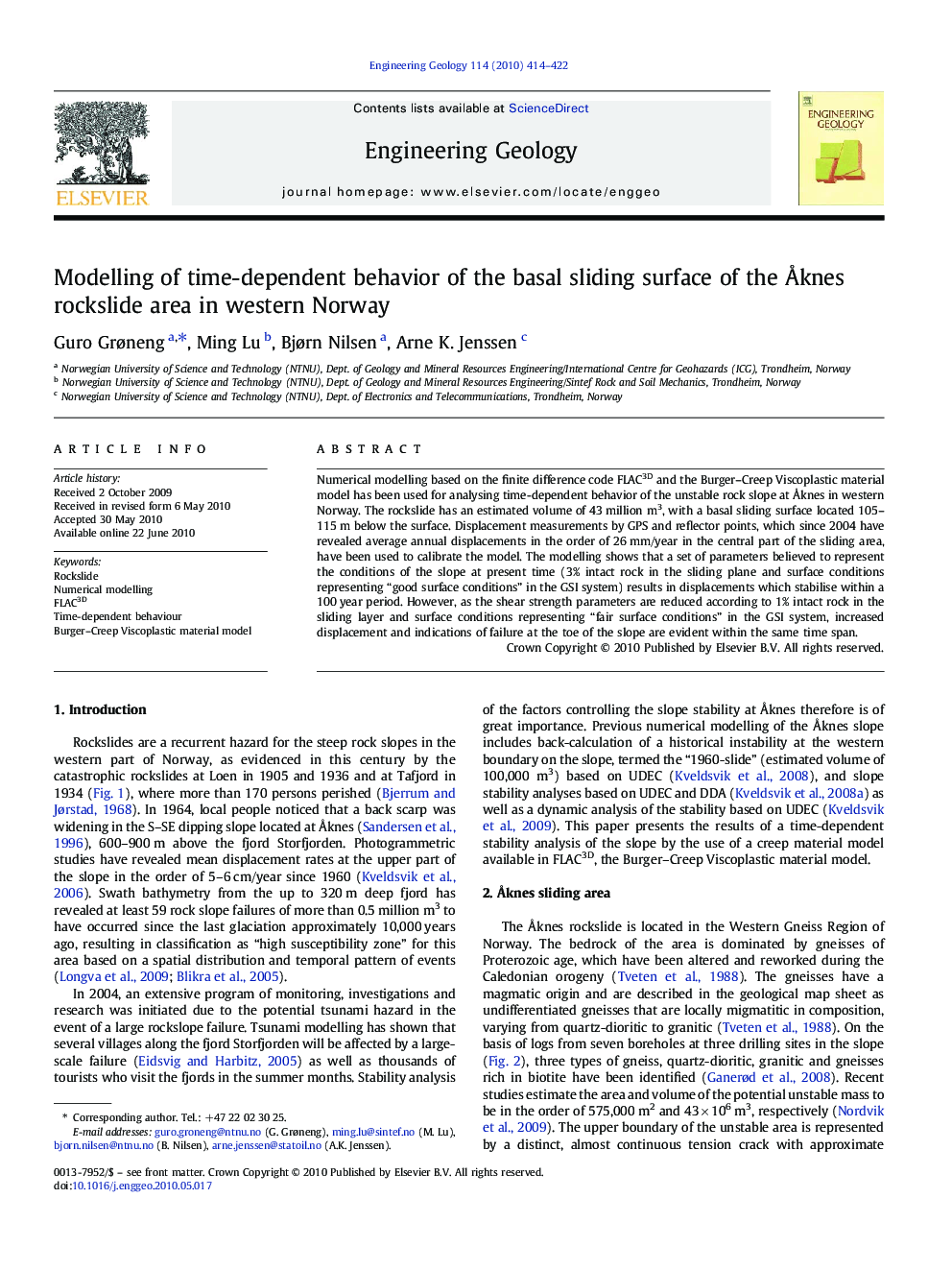| Article ID | Journal | Published Year | Pages | File Type |
|---|---|---|---|---|
| 4744320 | Engineering Geology | 2010 | 9 Pages |
abstractNumerical modelling based on the finite difference code FLAC3D and the Burger–Creep Viscoplastic material model has been used for analysing time-dependent behavior of the unstable rock slope at Åknes in western Norway. The rockslide has an estimated volume of 43 million m3, with a basal sliding surface located 105–115 m below the surface. Displacement measurements by GPS and reflector points, which since 2004 have revealed average annual displacements in the order of 26 mm/year in the central part of the sliding area, have been used to calibrate the model. The modelling shows that a set of parameters believed to represent the conditions of the slope at present time (3% intact rock in the sliding plane and surface conditions representing “good surface conditions” in the GSI system) results in displacements which stabilise within a 100 year period. However, as the shear strength parameters are reduced according to 1% intact rock in the sliding layer and surface conditions representing “fair surface conditions” in the GSI system, increased displacement and indications of failure at the toe of the slope are evident within the same time span.
Research highlights►Modelling time-dependent behavior of a basal sliding surface. ►Investigation of input parameters to Burger-Creep Viscoplastic model in FLAC3D. ►Discussion of the composition of complex sliding planes.
